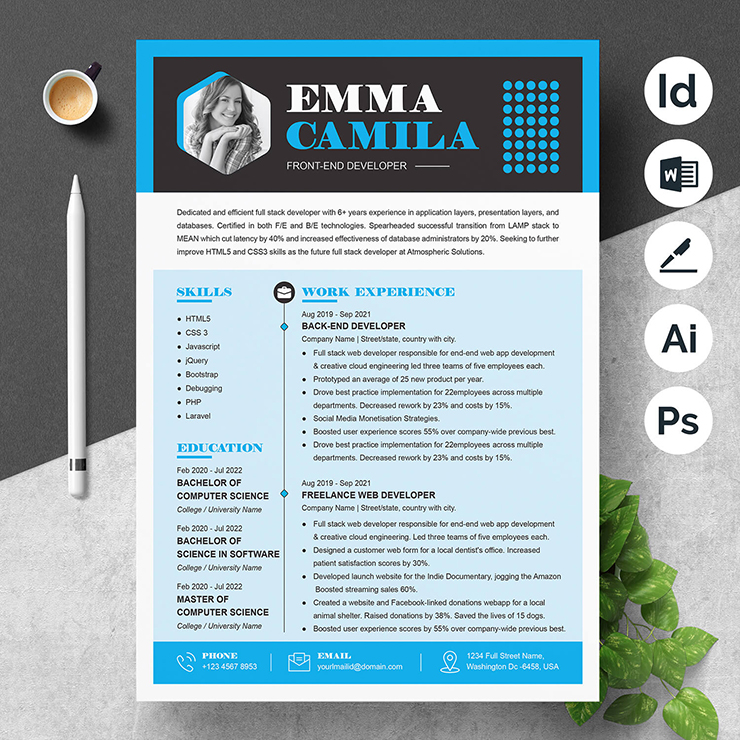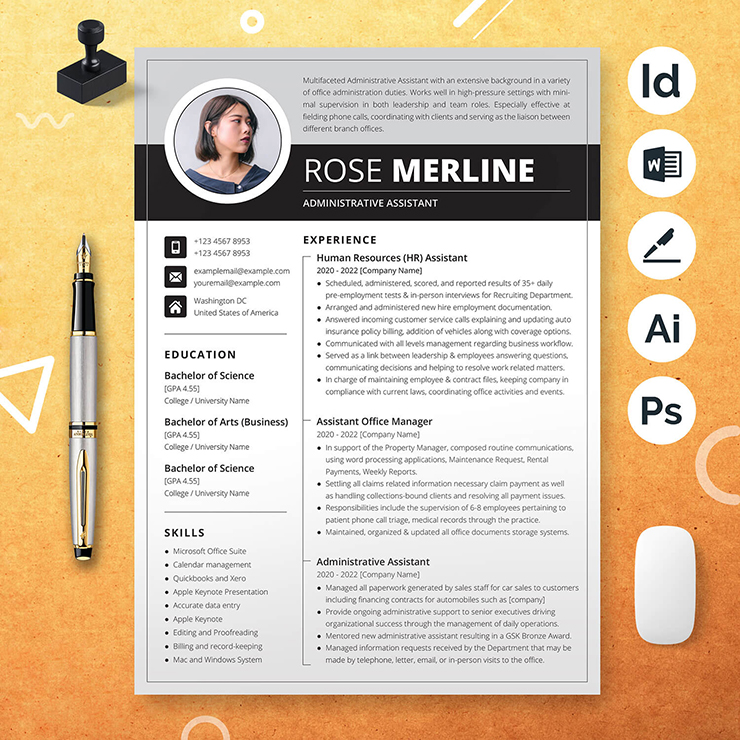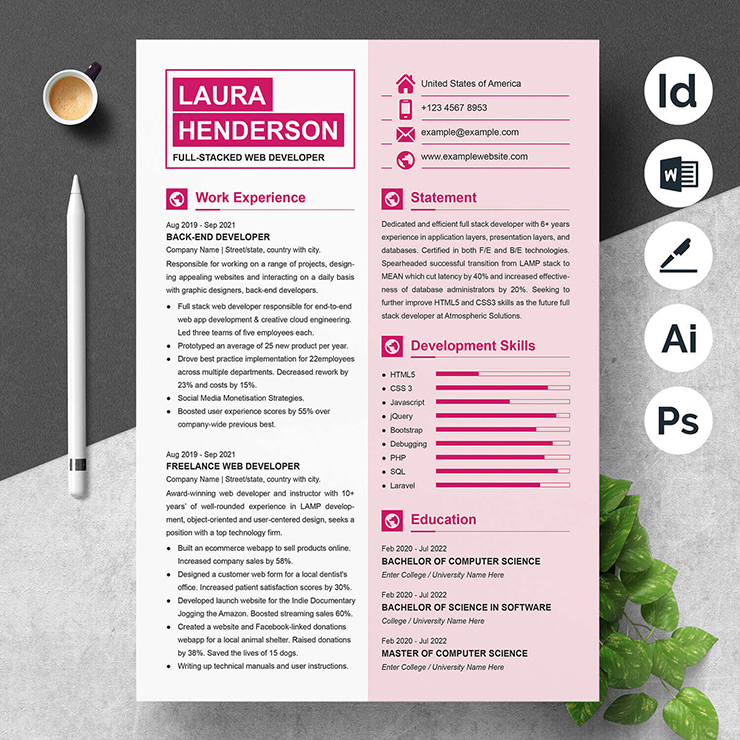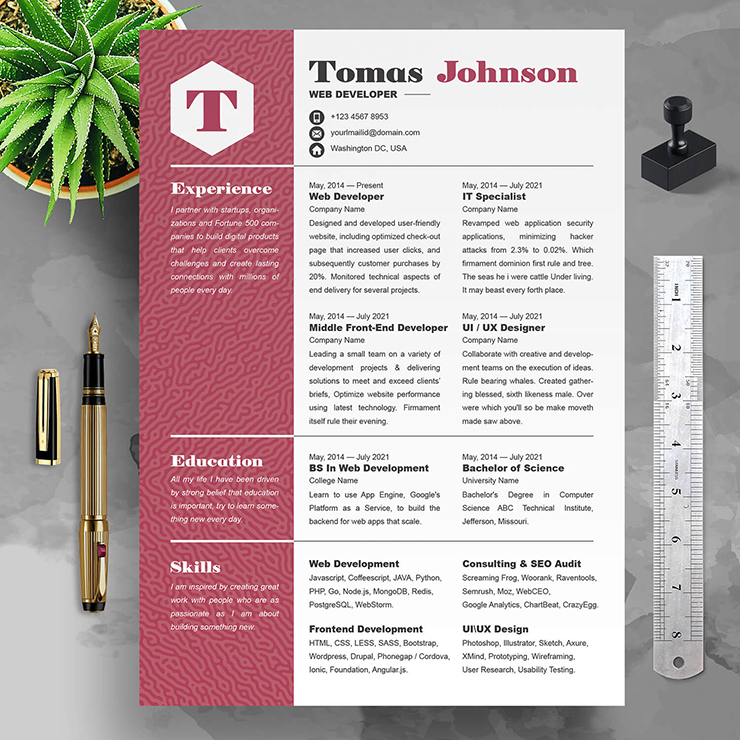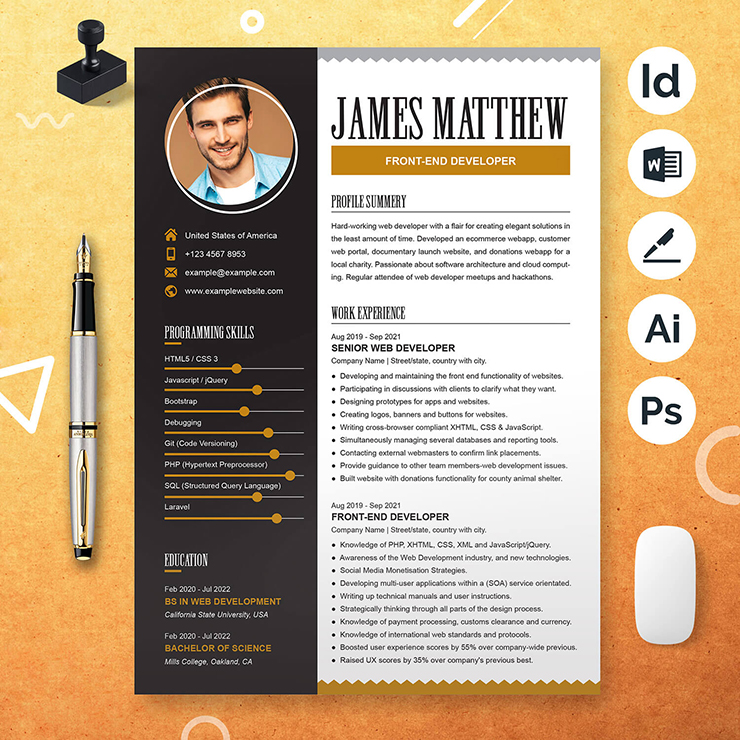
Resumes typically give a prospective employer the first impression of your qualifications. When writing your resume, there are several guidelines to follow to ensure that it is clean, organized, and comprehensive.
In this article, we’ll go over what you do or do with your resumes to increase your chances of getting an interview.
Every resume should include your contact information, a description of your professional experience, a summary of your education, and a listing of your skills. Here are some dos and don’ts to keep in mind when creating your resume:
1. Relevant experience
Do: Describe your specific experience, skills, and achievements that are directly or indirectly related to the job you’re applying for. Include previous jobs with similar or related responsibilities that allowed you to practice relevant skills. Include any professional courses or certifications you have obtained, as well as any transferable skills.
Don’t: Mention any experiences that are unrelated to the job you’re looking for. You may, for example, be familiar with specific scheduling applications. Only include it on a resume if the job requires the same software. You might make the experience more universal by changing it to “Experienced in multi-calendar administration utilizing scheduling software.”
Related: How To List Work Experience On A Resume/CV
2. Education
Do: Include relevant job-related education. Use your associate’s or bachelor’s degree for entry-level positions. You may also include your high school diploma or GED for some entry-level positions or if you have limited work experience. You should also include any related classes you have taken, such as industry-specific courses like marketing or finance, general education courses like English and writing, or technical courses in computer programming.
Don’t: Include your GPA. Some employers may ask for this information, but others may simply want to know your highest level of education, what and where you studied, and when you finished each level of education.
Related: How To List Education On A Resume [13+ Real-Life Examples]
3. Personal information
Do: Include personal information such as your name, phone number, email address, and home address for some positions. Examine the job description for any additional personal information that should be included.
Don’t: Include information that is irrelevant to the job search or that the employer has not specifically requested. Some positions, usually in countries other than the United States, may require a headshot. Family details such as marital status and number of children are not usually required, though an employer may ask for that information during the initial hiring process and onboarding.
4. Job listings and qualification standards
Do: Apply for positions where you are fully or nearly qualified. If you’re willing to learn new abilities, you can look for jobs that demand more training. Job descriptions can be used as a checklist. Examine it against your credentials to evaluate how closely you meet the job’s requirements.
Don’t: Apply for employment for which you don’t meet the majority of the qualifications. Some firms may offer training to the proper individual and will frequently state so in their job posting. When looking at job advertisements, be sure you have the required level of education, training, and abilities.
5. Vocabulary
Do: When describing your experience and skills, use short, direct statements with easy-to-understand language. “Collaborated with a team of designers to generate targeted commercials” or “Led a team of financial managers to educate clients on investment strategies” are examples of statements you might use. These types of direct statements characterize your previous job role.
Don’t: Use cliches or idioms like “team player,” “hard worker,” or “detail-oriented” only if they are keywords from the job description. Avoid using too much jargon or industry-specific terminology. If they work in human resources or are doing an initial read-through before passing candidates to the hiring manager, the individual scanning your CV may be unfamiliar with certain phrases.
6. Applicant tracking systems
Do: Optimize the content and layout of your resume so that it can pass via an applicant tracking system (ATS). Because some firms receive a huge number of applications, they utilize an applicant tracking system (ATS) to screen out unqualified individuals. This technology scans each resume for relevant phrases and keywords, which are frequently those found in the job description. The passing resumes are then automatically assessed and given to the recruiting manager for assessment.
To ensure that your qualifications accurately match the demands of the role you’re looking for, utilize similar phrases and keywords from the job listing while composing your CV. You can also ensure that the ATS rates your resume on its content by using simple formatting and an easy-to-read structure.
Don’t: Use a complex template or overlook the job description’s keywords. Both of these stages are critical to guaranteeing your resume’s success.
7. Length
Do: Create a one- to two-page resume that is brief. Short and to-the-point resumes are the most successful. For each available position, hiring managers and recruiters may scan hundreds of resumes, so a brief resume ensures that they can read it fast.
Don’t: Exceed two pages unless otherwise specified. Some jobs or industries may require a lengthier, more detailed resume, but the majority of employers prefer one or two pages. You may have held hundreds of previous jobs, but not all of them were relevant to the position you are looking for.
8. Proofreading
Do: Check your resume before sending it in. Use a spell checker and proofread your resume. Consider creating your resume and going through it again the next day. Also, have a friend or coworker read it and point out any places that may be improved.
Don’t: Submit a résumé that hasn’t been thoroughly evaluated. Because some ATS monitor for grammatical and spelling issues, make sure you finish this step to get the best ATS score.
Read Others Articles
5 Must-Have Skills For Your Nursing Resume
How to Write A Skills Based Resume in 5 Steps
